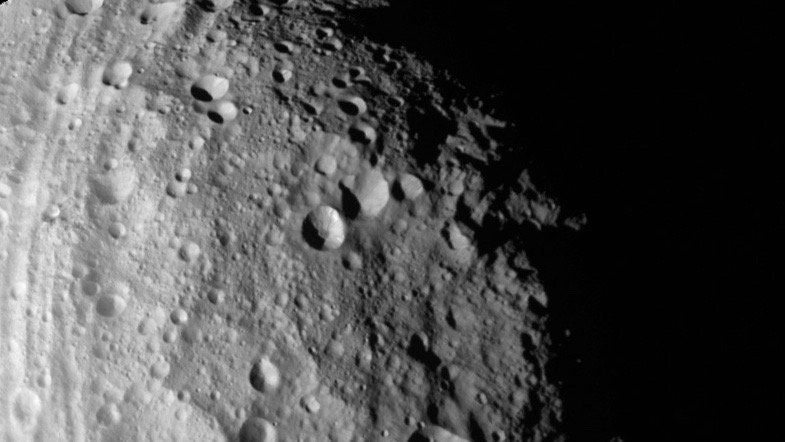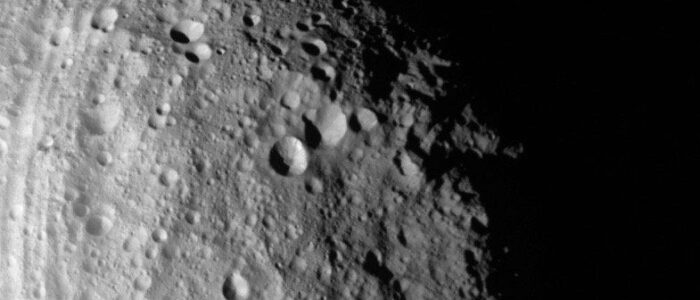Asteroid 2001 FO32 passes Earth on 21 March 2021. It was discovered in March 2001. This Asteroid is 1km (4,000 ft) in diameter. It will be passing at a distance of 1.3 million miles from Earth. An interesting fact is that it is would be the fastest object or rock that would pass the Earth. It will reach a blazing fast speed of 34.6 km per second. Currently it’s doing --,--- which is about --,---. Our Earth is moving at a speed of --,---.
Where is Asteroid 2001 FO32 now?
Space in 3D Web App
There is good news for the astronomers and people who like to watch the night sky with their backyard telescopes that they can watch it with their telescopes. It will appear as a slow-moving star. It would take about 5 to 10 minutes for amateur astronomers to track its trajectory. However, since it is fast, it is observable for a very short time span. It would be closest to Earth at 16:03 UTC on March 2021. At its closest approach, it would be about 2,061,351 Km from Earth. There is no chance to watch it with the naked eye. You will need an 8-inch telescope or bigger to watch it.
Currently 2001FO32 is --,--- from earth, racing through the solar system at --,--- (--,---) . It is getting --,--- --,--- earth every second.
Since midnight last night it got --,--- --,--- us. Since you started looking at this page it is --,--- --,---.
Will it hit or miss Earth?
Asteroid 2001FO32 is estimated to pass at about five times the distance earth-moon.
Our next encounter with this asteroid will be after 33 years on March 22, 2051. It completes its orbit around the sun in about 2.22 years or 810 days. Its orbit is highly elliptical.
It’s number is 231937.
What are Asteroids?
Asteroids are small objects with a rocky composition that orbit around the sun due to their gravitational pull. They are smaller in size compared to planets and mostly have a non-uniform shape. Asteroids vary in size. They have a rocky composition but most of the asteroids contain materials like clay, ice, sand, or heavy metals like silver, gold, or maybe platinum. They formed in the early period of our solar system a long time ago. During that time the solar system was a collection of hot gases or large rocky planets. Some of them collided with each other and as a result left behind debris or fragments that are called asteroids now. Sometimes they get influenced by some planet’s gravity but most of the time they wander in space. Most of the asteroids are present in the asteroid belt which is present in between the orbit of Mars and Jupiter.
Despite their shape or size, they can be deadly for a planet. An asteroid impact can wipe out entire life from Earth. Therefore, scientists have been desperately studying them for decades. Asteroids have collided with Earth in the past. An asteroid that was about 15 to 20 km in diameter collided with the Earth and is assumed to have wiped out the entire dinosaur’s specie from the Earth.
However, chances of collision are very low because Jupiter protects us from asteroids. The biggest planet has the strongest gravitational force among other planets in the solar system. As a result, asteroids get in contact with Jupiter and collide with it so the risk of asteroids colliding with the Earth decreases.
*This Interactive 3D Simulation is built on data provided by NASA JPL HORIZONS database for solar system objects and International Astronomical Union’s Minor Planet Center. Distances and speeds are estimates based on this data.
Photo Credit and other: NASA, ESO/S. Brunier, NASA/JHUAPL/SwRI, NASA/JPL-Caltech, JAXA, University of Tokyo & collaborators, UH/IA, Solar System Scope/INOVE CC BY 4.0, Wikipedia/Creative Commons Attribution-ShareAlike License, icons8.com, Péter Eke, NASA/Goddard/University of Arizona/Roman Tkachenko, Wikimedia Commons, Hayabusa 2 Arrival illustration by Akihiro Ikeshita (permission granted), oNline Web Fonts, Font Awesome, Galaxy vector created by stories – www.freepik.com


